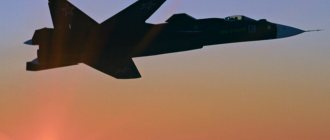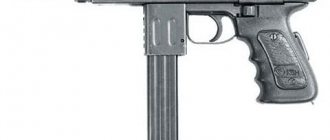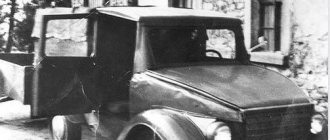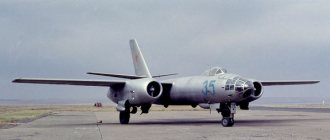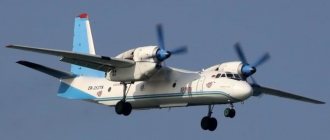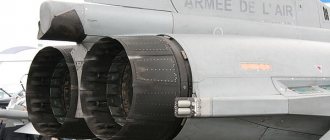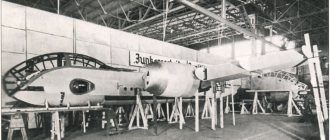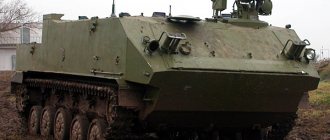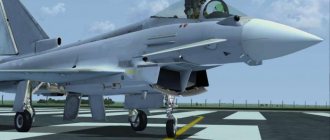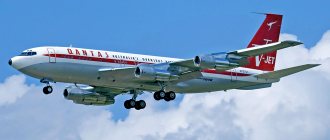| Be-200 | |
| Be-200ChS pours water, painted in the colors of the Russian flag, at MAKS 2009 | |
| Type | multi-purpose seaplane |
| Manufacturer | TANTK named after G. M. Beriev |
| Chief designer | Alexander Yavkin |
| First flight | September 24, 1998 |
| Start of operation | 2003 |
| Status | operated and produced |
| Main operators | EMERCOM of Russia EMERCOM of Azerbaijan |
| Units produced | 9 |
| Basic model | Be-42 |
| Images on Wikimedia Commons | |
Be-200Be-200
The Be-200
is a Russian amphibious aircraft (flying boat), developed by TANTK im. G. M. Beriev and produced at the Irkutsk Aviation Plant. In 2008, production of the Be-200ChS was transferred to TANTK named after G. M. Beriev. In terms of a number of flight performance characteristics, the aircraft has no analogues in the world[1].
The Be-200 is one of the most unusual and multi-purpose aircraft. This model was developed on the basis and using the ideas inherent in its predecessor - the A-40 amphibian. The plane is capable of taking off both from the ground and from the water surface. The main areas of application are the protection of water surfaces, environmental missions, fire fighting, transportation of passengers and cargo.
The first flight of the Be-200ChS prototype took place on September 24, 1998.
History of creation
The decision to begin work on the creation of an amphibious aircraft was made by Government Decree No. 497 of July 17, 1992. The Ministry of Industry of the Russian Federation was instructed to ensure development and construction within the deadlines: detailed design - 1993, construction of two experimental aircraft - 1994-1995 .g., start of flight tests - 1994, completion of certification work - 1996. Funds were provided in the amount of: 1600 million rubles in 1993-1995. under the Civil Aviation Development Program until 2000 and 150 million rubles from the concession fund in the third quarter of 1992.
In 2008, production of the Be-200ChS was transferred from the Irkutsk Aviation Plant to TANTK named after. Beriev (Taganrog). The Irkutsk Aviation Plant supplies some of the parts for the production of gliders, in particular, the aircraft wing[2]. By the time production began in Taganrog, it was planned to significantly improve the aircraft. Be-200 aircraft produced after 2011 are equipped with a cockpit with a specially designed ARIA-200 flight and navigation system, which allows a crew of two to simultaneously perform aircraft navigation and perform the following tasks automatically:
- access to the fire source and water intake area,
- approach to aerodromes equipped with an instrument landing system (ILS) according to ICAO categories 1 and 2,
- accurate determination of relative position in a group in poor visibility
so-called glass cabin[3].
November 10, 2010 for modification of the Be-200ChS
(indicated in the certificate as
Be-200ES-E
) a European Restricted Type Certificate was obtained
[
4].
An-32P
The aircraft was created on the basis of the An-32 serial transport aircraft and ensures the following operations for the protection and protection of forests:
- extinguishing forest fires with fire extinguishing agents;
- landing paratroopers-firefighters, special equipment, supplies and cargo to forest fire sites.
Over the course of more than 10 years of operation, the aircraft's design performance characteristics were confirmed. When 8 tons of fire extinguishing liquid are dropped from two groups of tanks from a height of 40-50 m, at an aircraft speed of 240-260 km/h, a water spot with a liquid concentration of more than 1 l/m2 is created on the surface of the earth, 120-160 m long and 10-35 wide. m. The discharge of fire extinguishing liquid can occur simultaneously (in one gulp) or sequentially from two tanks on one side, and then on the other, with an automatic delay or with manual control.
Two aircraft were used to extinguish a mountain forest fire in the vicinity of Yalta, (Ukraine). The experience of their use (about 100 flights over mountainous terrain) has shown the high efficiency of these aircraft. Three aircraft were sent for trial operation to Portugal. Working very hard (each plane carried out up to 10-12 sorties per day), the group completed 545 firefighting missions. The flight performance and effectiveness of the aircraft as a means of extinguishing fires were highly appreciated by the specialists participating in the trial operation.
An-32P (general view)
During the period without fires, it is planned to convert the aircraft at the airport into a standard transport version for transporting cargo.
To perform transport operations on an aircraft there are:
- a large cargo hatch in the rear part of the fuselage, closed by a ramp that can be lowered to the ground and serve as a ladder or slide under the fuselage, which ensures quick loading of cargo into the aircraft from the vehicle and convenience during parachute drop of cargo and people;
- loading device with a lifting capacity of 3 tons.
The dimensions of the cargo compartment (length 12.48 m, width 2.78 m and height 1.84 m) and hatch ensure the transportation of various cargoes, self-propelled and non-self-propelled wheeled vehicles. The cargo compartment is sealed and equipped with an air conditioning system.
The aircraft has the following main features:
- high degree of reliability of the design and systems, operational safety, proven during the long service life of the An-32 base aircraft;
- possibility of operation on unpaved airfields due to the design of the chassis with low-pressure pneumatics and the high location of the engines, which prevents the entry of foreign objects into the air intake
- high power supply, allowing flights with steep trajectories when operating in mountainous conditions;
- autonomous operation with the ability to start engines from the APU;
- ability to fly in adverse weather conditions.
In 1995, the Aviation Registry of the Interstate Aviation Committee and Ukraviatrans issued Special Category Type Certificates for the An-32P aircraft.
Serial production of the aircraft is carried out at Serial.
Technical characteristics of An-32P
| Indicator name | Meaning |
| Crew, people | 3 |
| Wingspan, m | 29,20 |
| Aircraft length, m | 23,78 |
| Aircraft height, m | 8,75 |
| Wing area, m2 | 74,98 |
| Weight, kg | |
| - empty plane | 16800 |
| – maximum take-off | 27000 |
| – fuel | 5445 |
| engine's type | 2nd TVD Progress AI-20D ser. 5 |
| Power, e.h.p. | 2 x 5180 |
| Maximum speed, km/h | 530 |
| Cruising speed, km/h | 500 |
| Max. firefighting speed, km/h | 220-230 |
| Ferry range, km | 1700 |
| Range, km | 330 |
| Practical ceiling, m | 9400 |
| Payload: | 27-30 firefighters-paratroopers with special equipment. equipment, 8 tons of fire extinguishing agent |
Video about the work of the AN-32P to extinguish fires in warehouses with secondary raw materials
Modifications
| Model name | Brief characteristics, differences. |
| Be-200 | Firefighting amphibious aircraft, 1 copy built (first flight September 24, 1998). |
| Be-200P | An amphibious patrol aircraft, with equipment for keeping the aircraft in the air for a long time and observation, with an increased crew of up to 9 people, of which 2 are pilots. |
| Be-200PS | Patrol search and rescue amphibious aircraft, further modernization of the Be-200P, designed for search and rescue operations on land and water. Equipped with special search and rescue equipment. The crew consists of 2 pilots, 2 observers, a flight mechanic and 2 rescuers. |
| Be-200ChS (aka Be-200ES-E ) | Multi-purpose amphibious aircraft, mass-produced (first flight August 27, 2002). |
| Be-300 (project) | Multi-role aircraft. Land version of the Be-200. |
Brief historical background
Historically, the topic of creating seaplanes first became relevant in countries that, due to the peculiarities of their geographical location, have vast water territories and sections of the state border passing through water. These are countries such as:
- Russia;
- USA;
- Canada;
- many European countries;
- Australia;
- New Zealand and other island countries.
Almost all countries have been developing hydroaircraft for many years, and new models and modifications are constantly appearing on the market. The number of seaplanes is already in the thousands, but market saturation is still far away, because... The need to ensure transport accessibility of many water areas is growing every year. Neither light aircraft nor helicopters are able to fill this transport gap. An amphibious aircraft that easily takes off from the surface of the water and lands on it is beyond competition here, because helps solve many problems in the following areas:
- patrolling and surveillance at the state border passing through water;
- monitoring and surveillance in order to suppress illegal acts in protected water protection zones;
- participation in search and rescue operations in disaster zones;
- participation in fire fighting, etc.
Since pre-revolutionary times, in the Russian Empire, and then in the USSR and in modern Russia, work has been and is ongoing on the development, design and production of amphibious aircraft.
Pre-revolutionary hydroplanes
Work on creating a flying boat that can take off and land on the water surface has been carried out since the beginning of the last century. The first model that was able to take off from the water and then splash down was the seaplane of the American inventor Glenn Curtiss. It was shaped like an airplane, but instead of a landing gear, special floats were installed.
In terms of design solutions, the seaplane itself can be called a project by Russian engineer D.P. Grigorovich, created by him in 1913. It was his model M-1 that became the first in this class. During the First World War, the army of the Russian Empire had a special squadron of flying boats, as they were called then, developed on the basis of Grigorovich’s M-1. These are models M-5 and M-9. For example, the M-5 model could reach a speed of 128 km/h, while the maximum flight altitude was 4 km, and the flight time was limited to a maximum of 5 hours. Weapons were not installed on it, because... she carried out reconnaissance missions and adjusted naval artillery fire.
Aviation was developing rapidly, so the M-9 seaplanes already differed from their predecessors in the presence of weapons; machine guns were installed on them, and it was possible to take bombs on board, they were attached under the wings. The crew consisted of three people: a pilot, an on-board mechanic who carried out the bombing, and a machine gunner.
Later, during the Civil War, seaplanes were used by both sides of the conflict, both the Bolsheviks and the Whites.
During World War II, the armament of seaplanes changed, because... mass use of torpedoes began. They were also installed on seaplanes, and the name “torpedo bombers” appeared precisely for this reason. Also, before the advent of the jet era, submarines were required to be equipped with light folding seaplanes that served as reconnaissance aircraft.
Beriev Design Bureau
When jet planes appeared, seaplanes gradually began to lose ground, because... in terms of technical characteristics, such as speed and flight range, they could not compete with the new generation of aircraft. But the USSR has always paid great attention to the development of hydroaviation. The main creator of these machines in the USSR was the Design Bureau in Taganrog under the leadership of the famous chief designer G.M. Beriev. Under his leadership in the period from the 30s to the 60s. last century, a number of seaplanes and amphibious aircraft were created.
Before the war, work was completed on major projects, such as:
- MBR-2;
- Be-2;
- Be-4.
The first seaplane MBR-2
These vehicles successfully took part in hostilities and proved themselves to be excellent. In peacetime, the design bureau continued its work, and the following devices were created:
- Be-6;
- jet Be-10.
The aircraft were in service with the USSR and Russian navies for a long time; they were repeatedly noted at the international level for their excellent qualities, and also set a number of records.
Also in the late 1960s. Beriev's bureau developed the Be-30 passenger aircraft, but, as Wikipedia reports, it was never put into mass production, presumably for political reasons. However, 25 years later, his restored version of the Be-32K at the aerospace show in France made a strong impression on aviation experts.
Since the 1970s The scope of design at the Beriev Design Bureau expanded significantly, and the bureau began to develop strategic military complexes:
- strategic complex A-50;
- Tu-142MR complex.
At the same time, continuous work has been going on over the years to develop and design the latest generation of amphibious jet aircraft. Amphibians, the design work of which has been carried out for many years, are represented by the following models:
- Be-12 (E);
- Be-103;
- A-40 Albatross;
- A-42PE;
- Be-200.
The scope of use of amphibious aircraft is very wide, ranging from routine patrols and monitoring to search and rescue activities in emergency situations. Currently, new models of amphibians are being developed - the Be-112 and Be-101. Much attention is also paid to the design of large amphibians with a take-off weight of over 1000 tons, which will be able to transport more cargo and passengers.
Since 2011, the Beriev Design Bureau and OJSC TAVIA merged; the new corporation was named UAC TANTK im. G.M. Beriev." The company is engaged not only in the development, but also in the launch of mass production, modernization and repair work of seaplanes and military strategic complexes on orders from the Russian Navy and Air Force.
Specifications
Specifications
- Crew:
2 people - Passenger capacity:
up to 64 passengers - Length:
32.05 m - Wingspan:
32.78 m - Height:
8.90 m - Wing area:
117.44 m² - Cabin dimensions (LxWxH):
18.7 m x 2.4 m x 1.8 m - Empty weight:
28000 kg - Payload weight:
8000 kg of cargo, as well as 12 m³ of water in tanks (8 sections of water tanks, with the possibility of simultaneous or sequential discharge) - Maximum take-off weight: From water:
40000 kg - From land:
42,000 kg
2 × D-436 turbofan engines
2 × 7500 kgf
Flight characteristics
- Maximum speed:
700 km/h at an altitude of 7000 m - Cruising speed:
550-610 km/h - Take-off speed:
220 km/h - Landing speed:
195 km/h - Speed when taking water:
100-120 km/h - Practical range:
3100 km - Service ceiling:
8000 m - Rate of climb:
8 m/s
It can be operated both from land airfields and from reservoirs at wave heights of up to 1.2 meters. The fuselage of the aircraft is sealed, which allows it to be quickly converted to transport passengers or cargo, as well as to perform a number of special operations. K: Wikipedia: Articles without sources (type: not specified)[ source not specified 2420 days
]
Power point
The power plant includes two D-436TP bypass turbojet engines developed by ZMKB Progress. Produced by Motor Sich and UMPO). The possibility of equipping the export version with Rolls-Royce Allison engines was also considered, but this would require re-doing 70% of the certification work[5]. In addition, already in 2008, only small-scale production of BR-715 engines was carried out, due to their obsolescence. For 2014, due to the situation in Ukraine, the SaM146, developed for the SSJ, is being considered as the main engine. K: Wikipedia: Articles without sources (type: not specified)[ source not specified 1384 days
]
Il-76TDP
Work on the creation of a firefighting version of the Il-76 began in 1988, and in 1989 an experimental model of an aircraft pour-out device (VAP) was manufactured, consisting of two cylindrical containers holding 16,000 liters of liquid each. To quickly implement the idea, steel pipes used in gas pipelines (with an outer diameter of 1220 mm and a wall thickness of 14 mm) were used in the design. The OS-5 fire extinguishing liquid was freely drained into the air defense through the open cargo hatch of the aircraft.
Il-76TDP (general view)
Flight tests carried out to determine the stability and controllability of the aircraft when draining water in various combinations (separately, in one gulp, with opening the containers at different times at flight speeds from 260 to 400 km/h) confirmed the correctness of the chosen concept. The irrigation surface area with sequential drainage from two tanks was 600 × 80 m, with a flight speed of 280 km/h and a drain height of 80 m. When draining water simultaneously in one gulp from two tanks, the area was 400 × 100 m. The concentration of liquid on the ground reached 5. 2 l per sq. meter in the center of the discharge zone with a gradual decrease towards the periphery.
The first flight tests of the Il-76TD with VAP equipment were carried out on real fires in the Krasnoyarsk Territory in 1990 jointly by the Ilyushin Design Bureau, the Ministry of Aviation Industry and Avialesookhrana. Fire extinguishing was carried out in the taiga on the plain, hilly terrain (relief height up to 600 m) and in the mountains (relief height up to 2500 m). Water discharges were carried out on single (2-5 ha) fires of medium intensity and on large fires (up to 50 ha). In the course of this work, a technique was developed for aircraft flight when extinguishing forest fires in areas with difficult terrain.
In the spring of 1992, two large fires occurred at military warehouses near Yerevan and Vladivostok. The Il-76 firefighter performed well on both fires, and in the same year the experimental VAP model was recommended for serial production with an increased volume.
By the beginning of 1993, the OKB designed an improved VAP-2 with a tank volume of 42,000 liters. The total weight of the VAP-2 structure with water was about 45 tons. Fundamentally, the design of the system has not changed. Two cylindrical tanks with a length of 21 m and a volume of 21,000 liters each were made of aluminum alloy with a wall thickness of 5 mm.
Heavy transport aircraft IL-76TD
Aviation pouring device (VAP-2)
Aviation pouring device (VAP-2)
In the front part of the tanks, on top, there are filler necks with two filler units for standard fire hoses. There are also overflow hoses, which are led out of the aircraft through the front doors and prevent liquid from overflowing into the cabin during refueling.
Four people, using mobile hoists on the ceiling of the aircraft, load and moor the VAP-2 in 1.5-2 hours. A standard Il-76 aircraft can be converted into an Il-76TDP within 4 hours.
Preparation for fire-fighting flights using VAP-2 aircraft pour-out devices is determined by the time it takes to refuel the aircraft with fuel and water in two containers. With centralized refueling and optimal water pressure in the hydraulic system, preparation does not exceed 15 minutes. In the absence of a centralized water refueling, refueling using fire trucks is possible.
Technical characteristics of IL-76TDP
| Indicator name | Meaning |
| Crew, people | 7 |
| Payload | 50,000 kg of cargo or 150 passengers |
| Flight range, km | 3650 |
| Maximum speed, km/h | 860 |
| Fire extinguishing system | VAP-2 |
| Capacity of tanks for fire extinguishing agents, l | 42000 |
| Number of tanks, pcs. | 2 |
| Drop speed, km/h | 270-280 |
| Minimum possible height when dropping, m | 80 |
| Power, kN (kgf) | 12-15 |
| Drain time, sec | 6-8 |
| Overall dimensions (length*wingspanheight), m | 46.59 x 50.50 x 14.76 |
| Power, kN (kgf) | 4 x 117.7 (4 x 12000) |
| engine's type | 4 turbofan engines D-ZOKP |
| Weight, kg: | |
| – empty | 88000 |
| – maximum take-off | 190000 |
| Overall dimensions of the wetted strip, m: | |
| - length | 75 |
| - width | 4 |
| Average water supply, t/hour | 10-11 |
Video about the work of the Il-76TDP to extinguish fires in Chile
Operators and customers
Outside Russia, Azerbaijan received the first Be-200ES in early May 2008[6]
Indonesia Indonesia On October 30, 2020, the Indonesian government allocated budget funds for the purchase of four Russian Be-200 amphibious aircraft in the fire-fighting version (Be-200ChS).[7]
Civil
Russia, Russia:
- TANTK named after G. M. Beriev - 2 aircraft (prototypes, No. 01 and No. 02).[8] If a contract for the supply of Be-200s to any country is signed, these aircraft are planned to be transferred for temporary use (leasing) until the start of deliveries of the ordered aircraft[9].
- Ministry of Emergency Situations of Russia - 6 aircraft[10] An additional 8 aircraft have been ordered with delivery to begin at the end of 2010[11].
Azerbaijan Azerbaijan:
- Ministry of Emergency Situations of Azerbaijan - 1 aircraft.[8]
Military
Russia Russia - On April 24, 2013, a contract was signed for the supply of 6 Be-200s (2 Be-200ChS and 4 Be-200PS) for a total amount of 8.4 billion rubles[12].
Bombardier (Canadairs CL-415)
In December 1986, it was purchased, and in August 1988, the Canadair Group of Bombardier Inc. was formed. These historical events occurred while Canadaair was developing a turboprop version of the CL-215 amphibious flying boat. Replacing piston engines with turboprop engines promised an increase in flight performance, an increase in thrust-to-weight ratio and made it easier to supply the aircraft with fuel and spare parts. In 1991, an improved amphibious version was designated CL-415 to avoid confusion with the CL-215T turboprop conversion of the piston aircraft. The official presentation of the new modification took place in October 1991 - after receiving the first order from France.
The first CL-415 flew on December 6, 1993, with Canadian airworthiness certification in June and U.S. airworthiness certification in October 1994. In December 1994, the first car was delivered to France. Initially, it was planned to build 50 aircraft in the first production series, but by May 2009, customers received 67 aircraft, by which time the company had received orders for 71 aircraft.
The CL-415 inherited the proven CL-215 amphibious airframe, although a number of design changes were made to the aircraft, the most important of which was the installation of two Pratt & Whitney Canada PW123AF turboprop engines, the nacelles of which were placed above the wing to raise the axis of rotation of the new four-blade Hamilton Standard propellers. . Other notable external differences include small wingtip winglets installed to improve lateral stability. In order to compensate for the loss of directional stability due to the upward movement of the engines, the tail unit was modified. The power of the control surface drives was also increased, a centralized fuel refueling system under pressure was installed, the instrumentation was made according to the “glass cockpit” principle, the electrical system was replaced, and a cabin air conditioner was installed. The airframe structure has been strengthened to increase the maximum take-off weight; four tanks for water or fire-fighting mixture with a total capacity of 6140 liters have been installed.
Bombardier (Canadairs CL-415) (general view)
In its standard version, the CL-415 amphibian is designed to extinguish fires, as well as transport cargo and passengers. The aircraft is usually designated simply "415" or "415 Superscooper". A firefighting aircraft can be quite easily converted into a transport aircraft. Even in the fire-fighting version, the aircraft is capable of carrying up to eight passengers; after conversion, the passenger capacity increases to 30 people. If the water tanks installed above the cabin floor are not dismantled, the aircraft is capable of carrying cargo and up to 11 passengers; passenger seats are placed in front and behind the tanks. Canadair also offers the CL-415M variant, designed for offshore patrol, search and rescue and special missions. The CL-415M has the ability to install a radar, a modern navigation system and other special equipment. The aircraft was launched into production as the Bombardier 415MP.
In total, as of 2014, 88 aircraft were built, of which about 70 are in operation. The aircraft occupies a fairly niche market for specialty aircraft, but is well established in this area in Europe and North America.
Specifications Bombardier (Canadairs CL-415)
| Indicator name | Meaning |
| Crew, people | 2 |
| Wingspan, m | 28,63 |
| Aircraft length, m | 19,82 |
| Aircraft height, m | 8,98 |
| Wing area, m2 | 100,33 |
| Empty aircraft weight, kg | 12860 |
| Maximum take-off, kg: | |
| – from the water | 17230 |
| - from sushi | 19890 |
| Internal fuel, l | 5800 |
| engine's type | 2 theaters Pratt Whitney Canada PW123AF |
| Power, hp (kW) | 2 x 2380 (1774) |
| Maximum speed, km/h | 359 |
| Cruising speed, km/h | 333 |
| Stall speed, km/h | 126 |
| Range, km | 2443 |
| Practical ceiling, m | 4500 |
| Rate of climb, m/s | 8,1 |
| Payload | 26-30 passengers or 3864 kg of cargo, or 6.12 tons of fire extinguishing agent |
Video about the operation of a Bombardier firefighting aircraft (Canadairs CL-415)
Notes
- Valery Yarmolenko.
[www.rian.ru/defense_safety/20100328/216864762.html Russian amphibious aircraft drew applause at the air show in Chile]. RIA Novosti (March 28, 2010). Retrieved August 13, 2010. [www.webcitation.org/65Yvs6WUH Archived from the original on February 19, 2012]. - [www.aviaport.ru/digest/2008/09/08/156898.html Serial production of the Be-200 amphibious aircraft begins in Taganrog]
- [rpg7.org/aircraft_news/24-be-200-taganrogskoj-sborki-budet-usovershenstvovan.html The Taganrog-assembled Be-200 will be improved // News of the military-industrial complex, the Ministry of Defense, the Armed Forces of Russia]
- [www.easa.eu.int/certification/type-certificates/docs/aircrafts/EASA-TCDS-A.114_(IM)_Beriev_BE—200ES—E_(restricted)-03-17112010.pdf EASA RESTRICTED TYPE-CERTIFICATE for Beriev Be-200ES-E]
- [www.aviaport.ru/news/2005/09/28/95467.html It is not practical to install Rolls-Royce aircraft engines on the Be-200 // AviaPort. News]
- [pda.avia.ru/news/?id=1209975644 The Be-200ES amphibious aircraft was handed over to the first foreign customer - the Ministry of Emergency Situations of Azerbaijan]
- [www.antaranews.com/berita/526563/pemerintah-anggarkan-pembelian-empat-pesawat-rusia-beriev Pemerintah anggarkan pembelian empat pesawat Rusia Beriev]
- ↑ 12
[www.aviaport.ru/news/2009/01/13/164566.html RF Ministry of Emergency Situations should receive another Be-200ES in the third quarter of 2009] - [www.aviaport.ru/news/2009/01/14/164672.html Experienced Be-200s are planned to be used to further promote the aircraft to the market]
- [www.lenta.ru/news/2012/04/16/ruslan/ Ministry of Emergency Situations ordered two Ruslan transport vehicles]
- [www.aviaport.ru/news/2009/01/13/164564.html The ministries agreed on funding for the construction of eight more Be-200s for the Russian Ministry of Emergency Situations]
- [lenta.ru/news/2013/05/24/be200/ The Ministry of Defense bought six amphibious aircraft]
Links
Ship ejection KOR-1 (Be-2) • KOR-2 (Be-4) Jet boats R-1 • Be-10 Amphibians Be-8 • Be-12/Be-14 “Chaika” • A-40 Multi-purpose civilian Be-103 • Be-200 Land-based An-30 ¹ • Be-30/Be-32 • Tu-142MR "Eagle" • A-50 ² • A-100 Experimental aircraft Be-1 • VVA-14 • A-60 Unrealized projects P-42 • Be-2500 • A-42 “Albatross” • Be-101 Notes: ¹ jointly with OKB im. O. K. Antonova; ² in collaboration with the Vega concern
Excerpt characterizing the Be-200
Napoleon silently shook his head. Believing that denial referred to victory and not to breakfast, Mr. de Beausset allowed himself to playfully respectfully remark that there was no reason in the world that could prevent one from having breakfast when one could do it. “Allez vous... [Get out to...],” Napoleon suddenly said gloomily and turned away. A blissful smile of regret, repentance and delight shone on Monsieur Bosse's face, and he walked with a floating step to the other generals. Napoleon experienced a heavy feeling, similar to that experienced by an always happy gambler who madly threw his money away, always won and suddenly, just when he had calculated all the chances of the game, feeling that the more thoughtful his move was, the more likely he was to lose. The troops were the same, the generals were the same, the preparations were the same, the disposition was the same, the same proclamation courte et energique [proclamation short and energetic], he himself was the same, he knew it, he knew that he was even much more experienced and now he was more skillful than he was before, even the enemy was the same as at Austerlitz and Friedland; but the terrible swing of the hand fell magically powerlessly. All those previous methods were invariably crowned with success: the concentration of batteries at one point, and the attack of reserves to break through the line, and the attack of the cavalry des hommes de fer [iron men] - all these methods had already been used, and not only were not victory, but the same news came from all sides about killed and wounded generals, about the need for reinforcements, about the impossibility of bringing down the Russians and about the disorder of the troops. Previously, after two or three orders, two or three phrases, marshals and adjutants galloped with congratulations and cheerful faces, declaring the corps of prisoners, des faisceaux de drapeaux et d'aigles ennemis, [bunches of enemy eagles and banners,] and guns, and convoys, and Murat, as trophies He only asked for permission to send in cavalry to pick up the convoys. This was the case at Lodi, Marengo, Arcole, Jena, Austerlitz, Wagram, and so on, and so on. Now something strange was happening to his troops. Despite the news of the capture of flushes, Napoleon saw that it was not the same, not at all the same as in all his previous battles. He saw that the same feeling that he experienced was experienced by all the people around him who were experienced in battle. All faces were sad, all eyes avoided each other. Only Bosse could not understand the significance of what was happening. Napoleon, after his long experience of war, knew well what it meant for eight hours, after all the efforts expended, for the attacker to not win a battle. He knew that it was almost a lost battle and that the slightest chance could now - at that tense point of hesitation on which the battle stood - destroy him and his troops. When he turned over in his imagination this whole strange Russian campaign, in which not a single battle was won, in which neither banners, nor cannons, nor corps of troops were taken in two months, when he looked at the secretly sad faces of those around him and listened to reports about that the Russians were still standing - a terrible feeling, similar to the feeling experienced in dreams, gripped him, and all the unfortunate events that could destroy him came to his mind. The Russians could attack his left wing, they could tear his middle apart, a stray cannonball could kill him. All this was possible. In his previous battles, he pondered only the accidents of success, but now countless unfortunate accidents presented themselves to him, and he expected them all. Yes, it was like in a dream, when a person imagines a villain attacking him, and the man in the dream swung and hit his villain with that terrible force that, he knows, should destroy him, and he feels that his hand, powerless and soft, falls like a rag, and the horror of irresistible death seizes the helpless man. The news that the Russians were attacking the left flank of the French army aroused this horror in Napoleon. He sat silently under the mound on a folding chair, head down and elbows on his knees. Berthier approached him and offered to ride along the line to make sure what the situation was. - What? What are you saying? - said Napoleon. - Yes, tell me to give me a horse. He got on horseback and rode to Semenovsky. In the slowly spreading powder smoke throughout the entire space through which Napoleon was riding, horses and people lay in pools of blood, singly and in heaps. Napoleon and none of his generals had ever seen such horror, such a number of people killed in such a small space. The roar of the guns, which did not stop for ten hours straight and tormented the ear, gave special significance to the spectacle (like music in living paintings). Napoleon rode to the heights of Semenovsky and through the smoke he saw rows of people in uniforms of colors that were unusual for his eyes. They were Russians. The Russians stood in dense ranks behind Semenovsky and the mound, and their guns continually hummed and smoked along their line. There was no more battle. There was an ongoing murder that could lead neither the Russians nor the French anywhere. Napoleon stopped his horse and fell back into that reverie from which Berthier had brought him out; he could not stop the work that was being done in front of him and around him and which was considered to be guided by him and dependent on him, and this work for the first time, due to failure, seemed unnecessary and terrible to him. One of the generals who approached Napoleon allowed himself to suggest that he bring the old guard into action. Ney and Berthier, standing next to Napoleon, looked at each other and smiled contemptuously at the senseless proposal of this general. Napoleon lowered his head and was silent for a long time. “A huit cent lieux de France je ne ferai pas demolir ma garde, [Three thousand two hundred miles from France, I cannot allow my guard to be defeated.],” he said and, turning his horse, rode back to Shevardin. Kutuzov sat, with his gray head drooping and his heavy body slumped, on a carpeted bench, in the very place where Pierre had seen him in the morning. He did not make any orders, but only agreed or disagreed with what was offered to him. “Yes, yes, do it,” he responded to various proposals. “Yes, yes, go, my dear, and have a look,” he addressed first one or the other of those close to him; or: “No, no, we’d better wait,” he said. He listened to the reports brought to him, gave orders when his subordinates required it; but, listening to the reports, he seemed not to be interested in the meaning of the words of what was said to him, but something else in the expressions of the faces, in the tone of speech of those reporting, interested him. From long-term military experience, he knew and with his senile mind understood that it is impossible for one person to lead hundreds of thousands of people fighting death, and he knew that the fate of the battle is not decided by the orders of the commander-in-chief, not by the place where the troops are stationed, not by the number of guns and killed people, and that elusive force called the spirit of the army, and he watched over this force and led it, as far as it was in his power. The general expression on Kutuzov’s face was one of concentrated, calm attention and tension, which barely overcame the fatigue of his weak and old body. At eleven o'clock in the morning they brought him the news that the flushes occupied by the French were again repulsed, but that Prince Bagration was wounded. Kutuzov gasped and shook his head. “Go to Prince Pyotr Ivanovich and find out in detail what and how,” he said to one of the adjutants and then turned to the Prince of Wirtemberg, who was standing behind him: “Would your Highness be willing to take command of the first army.” Soon after the prince's departure, so soon that he could not yet get to Semenovsky, the prince's adjutant returned from him and reported to his Serene Highness that the prince was asking for troops. Kutuzov winced and sent Dokhturov an order to take command of the first army, and asked the prince, whom he said he could not do without at these important moments, to return to his place. When the news of Murat’s capture was brought and the staff congratulated Kutuzov, he smiled. “Wait, gentlemen,” he said. “The battle has been won, and there is nothing unusual in the capture of Murat.” But it's better to wait and rejoice. “However, he sent an adjutant to travel through the troops with this news. When Shcherbinin rode up from the left flank with a report about the French occupation of flushes and Semenovsky, Kutuzov, guessing from the sounds of the battlefield and from Shcherbinin’s face that the news was bad, stood up, as if stretching his legs, and, taking Shcherbinin by the arm, took him aside . “Go, my dear,” he said to Ermolov, “see if anything can be done.” Kutuzov was in Gorki, in the center of the position of the Russian army. The attack directed by Napoleon on our left flank was repulsed several times. In the center the French did not move further than Borodin. From the left flank, Uvarov's cavalry forced the French to flee. In the third hour the French attacks stopped. On all the faces who came from the battlefield, and on those who stood around him, Kutuzov read an expression of tension that had reached the highest degree. Kutuzov was pleased with the success of the day beyond expectations. But the old man’s physical strength left him. Several times his head dropped low, as if falling, and he dozed off. He was served dinner. The outhouse adjutant Wolzogen, the same one who, driving past Prince Andrei, said that the war must be im Raum verlegon [transferred into space (German)], and whom Bagration hated so much, drove up to Kutuzov during lunch. Wolzogen arrived from Barclay with a report on the progress of affairs on the left flank. The prudent Barclay de Tolly, seeing the crowds of wounded running away and the upset backsides of the army, having weighed all the circumstances of the case, decided that the battle was lost, and with this news he sent his favorite to the commander-in-chief. Kutuzov chewed the fried chicken with difficulty and looked at Wolzogen with narrowed, cheerful eyes. Wolzogen, casually stretching his legs, with a half-contemptuous smile on his lips, approached Kutuzov, lightly touching the visor with his hand. Wolzogen treated His Serene Highness with a certain affected carelessness, intended to show that he, as a highly educated military man, was allowing the Russians to make an idol out of this old, useless man, and he himself knew with whom he was dealing. “Der alte Herr (as the Germans called Kutuzov in their circle) macht sich ganz bequem, [The old gentleman settled down calmly (German)] - thought Wolzogen and, looking sternly at the plates standing in front of Kutuzov, began to report to the old gentleman the state of affairs on the left flank as Barclay ordered him and as he himself saw and understood it.
And the Be-200 has competitors...
In Soviet times, we were accustomed to considering our planes the best in the world, and in some places this was true. But 20 years after the collapse of the USSR, we have to get used to the fact that even our most loyal customers are beginning to turn away from Russian technology. Nothing personal - just business...
Of
course, there is a strong political component in sales of military equipment, but now it is increasingly being replaced by the issue of quality and price. For “developing” countries, there is freedom in this regard: due to the reduction in political confrontation between leading arms manufacturers, they can choose the best - both in quality and in price and accompanying bonuses.
India is the largest independent consumer of military equipment, and traditionally it has satisfied a significant share of its demand through the products of the USSR-Russia. Alas, recently the Americans have been successfully conquering our place in the Indian arms market: just remember the huge contracts for heavy military transport and patrol-anti-submarine aircraft, for heavy helicopters, concluded with the United States and essentially closing these niches for Russia. And, again, alas, Russian manufacturers do not always provide decent quality, including after-sales service, so we have to blame ourselves for the breakthrough of the Americans not so much them and the “corrupt” Indians, but themselves. But the Americans are not the only ones eager for the Indian military purse. Japan is taking the first steps towards entering the international arms market, including aviation ones. Our Be-200 comes under attack...
Back in 2010, the Indian Navy voiced the need to purchase amphibious aircraft. Their main task was the search and rescue service on the Andaman, Nicobar and Laccadive Islands remote from the subcontinent; the vehicles should also be capable of performing maritime reconnaissance, carrying out cargo and passenger transportation between the islands and delivering spare parts for ships of the Indian fleet, landing rapid reaction forces and rescuers . The vehicles must be adapted for transporting the wounded and for fighting pirates and terrorists, have powerful search equipment (including a side-scan radar and an infrared system), and radio reconnaissance equipment. To be based on the islands, the aircraft must be able to operate from short runways and have a flight range of at least 1,500 kilometers.
A
Mphibia, as reported, were planned to be ordered by both the Air Force and the Navy, the first - six pieces, the second - 9, and it is not excluded that the final number of the naval order could reach 18. Naturally, the actual number of vehicles for which the tender will be issued may still change in any direction, but given the cost of flying boats, there is something to fight for.
Naturally, the Canadian Bombardier with the CL-415 and the Russian Beriev with the Be-200 immediately responded to the proposal, but it soon became clear that the list of aircraft suitable for the conditions of the future competition was not exhausted by them. There is also the Japanese ShinMaywa US-2.
This is a very dangerous opponent for the Beriev 200, and the fact that it has not encountered it before can be explained solely by Japanese policy, which prohibits the sale of Japanese-made military equipment abroad. Recently, the economic difficulties faced by the Land of the Rising Sun have forced the Japanese to slowly lift such restrictions, and there are no longer any obstacles to the US-2 entering the arms market. In November 2011, it was officially stated that, although the aircraft is military, it is unarmed, and, therefore, its sales abroad are not subject to the arms export ban.
Previously, ShinMaywa offered a civilian version of its amphibian for export, but it did not arouse interest, mainly due to the high cost and low demand for such vehicles in the civilian market. The latter was mainly conquered by the Canadians with their light twin-engine vehicles, capable of being used both as purely firefighting vehicles and also as rescue and patrol vehicles. Nine countries have already chosen the CL-415, and in four cases military markings have appeared on the sides of the vehicles. For comparison, where large Be-200s fly only in the colors of the Russian Ministry of Emergency Situations and its Azerbaijani counterpart (1 aircraft).
Judging by what the Indians want from their amphibians, the main struggle will take place between large “ocean-going” machines, and the competitors will have to design new modifications of their aircraft, respectively, the Beriev will have something like the Be-220, the Japanese have an export aircraft like SS-3. Perhaps the Beriev is the favorite, but the Japanese amphibian is not a bad choice.
Firstly , it was specially designed to perform most of the tasks that the Indians call it, and in open sea conditions. The seaworthiness of the US-2 is significantly higher than that of the Be-200, the takeoff and landing characteristics are radically better (including due to the use of a fifth engine for boundary layer control), the flight duration and range, as well as the payload capacity are noticeably greater. The ability of the US-2 to conduct patrol and rescue operations on the high seas at any time of the year has been tested both on it and on its predecessor, the Shin Meiwa US-1/1A (in total, about 900 rescue missions were completed, hundreds of people were rescued), while while the Be-200 is operated mainly from land as a firefighting aircraft. The avionics on the basic versions of the US-2 and Be-200 are generally identical.
Secondly , the Japanese aircraft uses the same AE 2100 engines (albeit of a different modification) as the Hercules transport aircraft recently purchased for the Indian Air Force, which will greatly simplify operation, while the Be-200 uses D-436, and they are not in India, and, apparently, there will not be even a civilian version. Technical support for both Russian and Ukrainian engines is noticeably inferior to American ones.
Thirdly , the Japanese are seen by many in India as much more responsible partners than the Russians. And they have the right to think so: stories of delays in deliveries of A-50 aircraft and endless postponements of readiness dates and rising costs of the Vikramaditya aircraft carrier, like some others, are widely heard. Just like Japanese obligation.
ABOUT
However, the Japanese proposal is not without its drawbacks compared to the Be-200. The main thing is the high cost of the aircraft: as much as 75 million dollars apiece! True, the Be-200 is also not cheap - the last contract for 8 Be-200 for the Russian Ministry of Defense cost 14 billion rubles, which gives the average cost of one aircraft at 53 million dollars. And, as they say, the high price of the Japanese amphibian was determined based on the very small needs of the Self-Defense Forces, which order one amphibian every two years, while receiving an Indian contract could double production at once and, apparently, significantly reduce the cost of the aircraft.
The operation of the five-engine Japanese amphibian will not be cheap, but this is the price to pay for its high takeoff and landing characteristics. It’s up to the Indian military to decide, and they haven’t been looking “for pennies in nickels” for a long time and are ready to pay quite a lot of money for the equipment they need. At the very least, they are willing to pay $178 million for the transport S-117 Globemaster III, which is superior in many characteristics to the Il-76, and $220 million apiece for the anti-submarine P-8 Poseidon. So our aircraft manufacturer might not have to miss out on this Indian contract. If, of course, it is issued at all.
Meanwhile, the Japanese held a presentation of the US-2 at the Indian exhibition Defexpo-2012, and are promoting their US-2 in other countries, for example, Indonesia and Brunei. There are few chances to interest Indonesians in an expensive amphibian, but even the Japanese do not want to miss them. Well, Rosoboronexport should do everything possible to push the Be-200 into the Indian market, and TANTK itself should somehow influence Rosoboronexport. Otherwise it will be like with the IL-76, in the program of which they seem to have forgotten about promotion for export, in the presence of an internal order...
